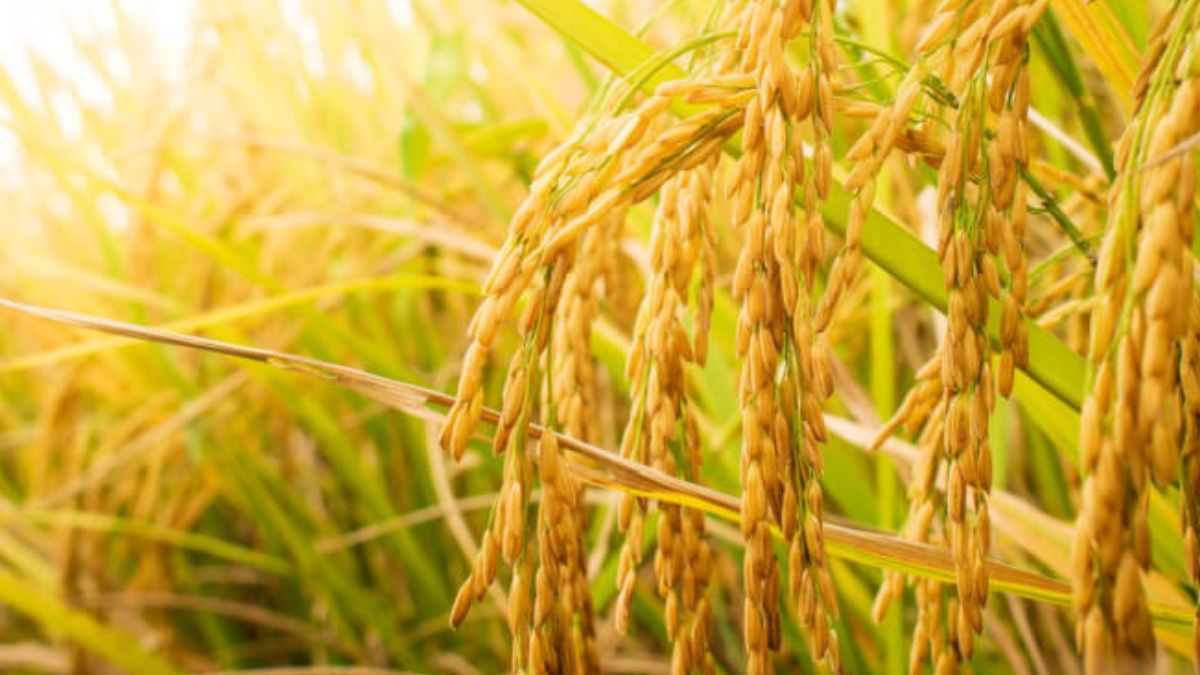- Courses
- GS Full Course 1 Year
- GS Full Course 2 Year
- GS Full Course 3 Year
- GS Full Course Till Selection
- Online Program
- GS Recorded Course
- NCERT (Recorded 500+ Hours)
- Polity Recorded Course
- Geography Recorded Course
- Economy Recorded Course
- AMAC Recorded Course
- Modern India, Post Independence & World History
- Environment Recoded Course
- Governance Recoded Course
- Science & Tech. Recoded Course
- International Relations and Internal Security Recorded Course
- Disaster Management Module Course
- Ethics Recoded Course
- Essay Recoded Course
- Current Affairs Recoded Course
- CSAT
- 5 LAYERED ARJUNA Mentorship
- Public Administration Optional
- ABOUT US
- OUR TOPPERS
- TEST SERIES
- FREE STUDY MATERIAL
- VIDEOS
- CONTACT US
Asian Rice Pangenome Unveiled: A Genetic Breakthrough for Resilient Crops
Asian Rice Pangenome Unveiled: A Genetic Breakthrough for Resilient Crops

Context
Chinese Scientists have developed the first-ever comprehensive pangenome for Asian rice (Oryza sativa L.), integrating genetic data from 144 wild and cultivated rice varieties across Asia.
What is a Pangenome?
- A pangenome is a complete collection of genome sequences from multiple individuals of a species, comprising both:
- Core genes: Shared by all varieties.
- Unique genes: Present only in specific varieties (including wild strains).
- Unlike a single reference genome, which represents just one variety, a pangenome offers a comprehensive map of genetic diversity.
How Was the Rice Pangenome Created?
- Scientists used PacBio high-fidelity (HiFi) sequencing technology, a long-read DNA sequencing method that provides highly accurate, long DNA reads.
- The project combined essential genetic segments from 144 wild and cultivated rice varieties to build a high-resolution pangenome.
Key Scientific Findings
- The pangenome revealed 3.87 billion base pairs of novel genetic sequences absent from the previous single reference genome.
- A total of 69,531 genes were identified:
- 28,907 core genes shared by all varieties.
- 13,728 genes specific to wild rice.
- About 20% of all genes are unique to wild rice, representing a significant reservoir of genetic diversity.
- Scope: These unique wild rice genes are linked to traits such as disease resistance and environmental adaptation, offering a "genetic goldmine" for future crop improvement.
Studies revealed about Rice Domestication
- The research supports the hypothesis that all Asian cultivated rice originated from a wild variety called Or-IIIa, a variant of Oryza rufipogon.
- Haplotype analysis confirmed that all domestication in Asian rice derives from the japonica ancestor Or-IIIa, indicating a single domestication event.
- The study mapped gene flow among rice groups in South Asia and identified a new subpopulation, intro-indica, further clarifying rice evolution and domestication pathways.
Benefits Over Traditional Reference Genome
|
Feature |
Reference Genome |
Pangenome |
|
Definition |
Single variety’s genome |
Combined data from many varieties |
|
Genetic Coverage |
Limited |
Comprehensive (core + unique genes) |
|
Core Genes Identified |
Not categorized
|
28,907
|
|
Unique/Wild-Specific Genes
|
Not included
|
13,728
|
|
Novel Genetic Material |
Limited
|
3.87 billion base pairs of new sequences |
|
Representation of Diversity |
Low |
High |
|
Use in Breeding |
Limited
|
High potential for stress-tolerant, high-yield rice |
Significance for India and Global Food Security
- Food Security: Rice is a staple food for over half the world’s population.
- The pangenome provides a vital resource for breeding rice varieties with enhanced traits:
- Disease tolerance.
- Resilience to climate shocks (drought, heat, pests).
- Higher yield and improved nutritional quality.
- Precision Breeding: The pangenome enables precision breeding using tools like CRISPR, allowing scientists to introduce beneficial traits from wild rice into cultivated varieties.
- Sustainable Agriculture: The pangenome will help Indian and global scientists develop rice varieties that can resist climate change, pests, and diseases, ensuring long-term food security.
Climate Change Challenges
- Climate change is a significant threat to rice production, with India experiencing a 0.7°C temperature rise since 1901 and 2024 being the hottest year on record.
- Higher temperatures increase arsenic uptake in rice, affecting health and crop stability.
- The pangenome’s genetic diversity can help to breed rice varieties resilient to such environmental stresses.
Conclusion
- The creation of the rice pangenome marks a transformative step in agricultural genomics.
- It offers a holistic genetic resource for breeding climate-resilient, high-yield, and disease-resistant rice varieties.
This innovation is pivotal for ensuring long-term global food security in the face of climate change and population growth, especially for countries like India



